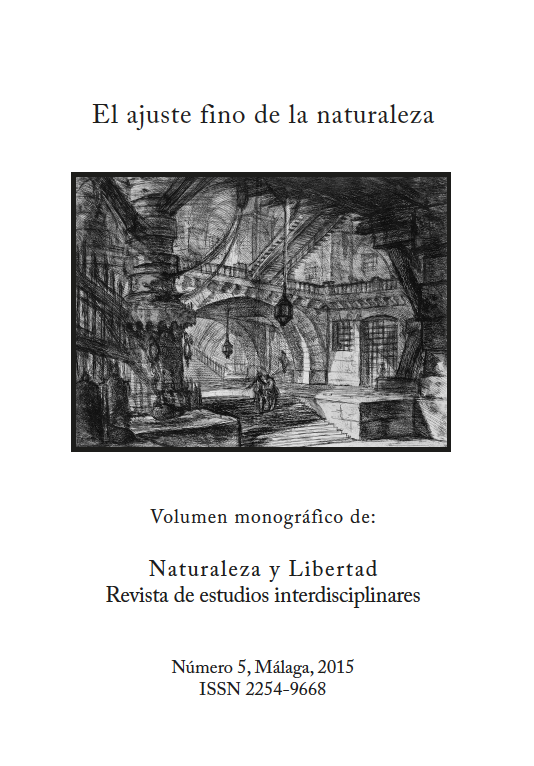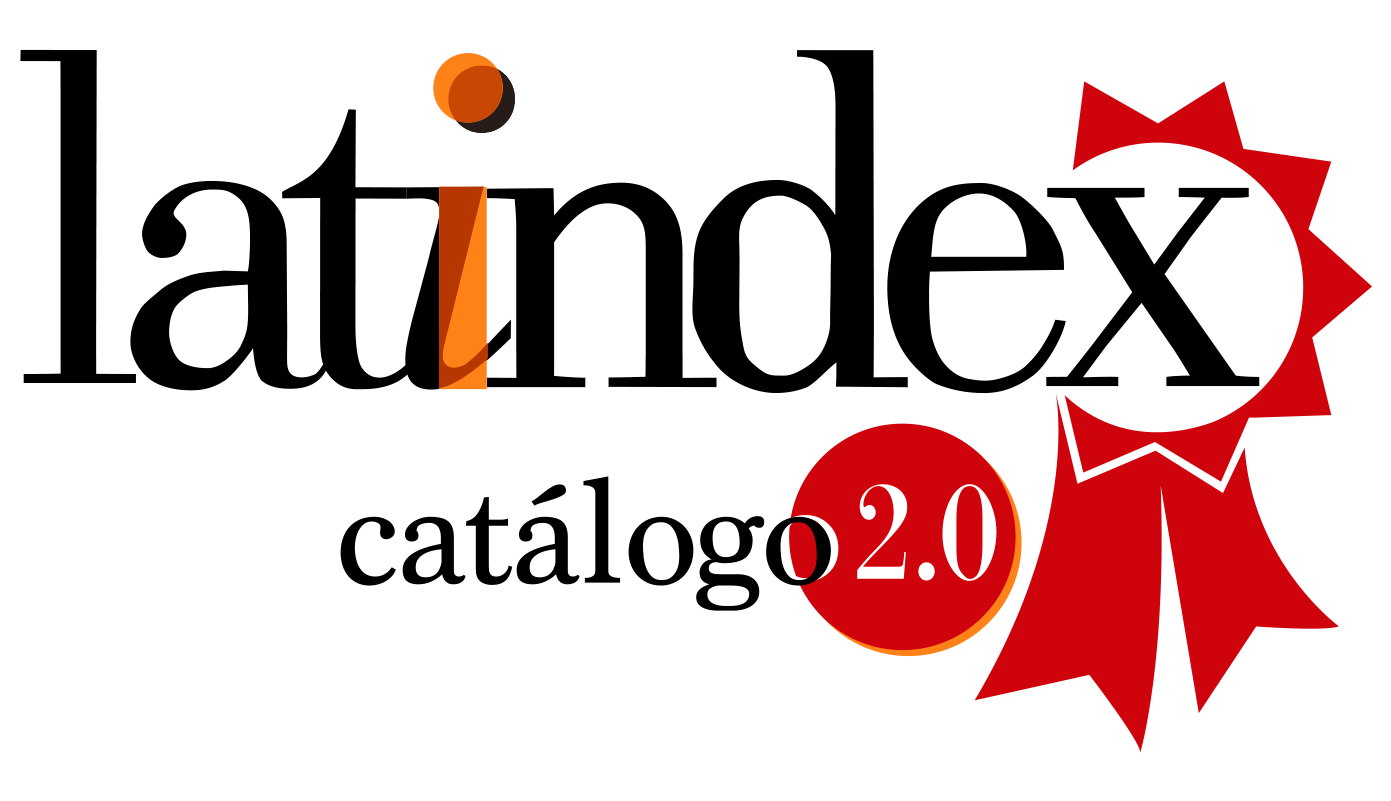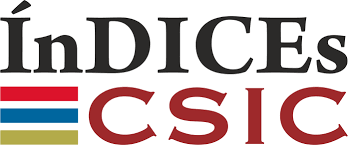Neuroteología. ¿Es hoy la nueva teología natural?
DOI:
https://doi.org/10.24310/NATyLIB.2015.v0i05.6315Keywords:
neuroteología, neurociencia, teología natural, teodicea, metafísica, epistemología, ciencia, filosofía, religión,Abstract
La Neuroteología surge como una nueva forma de explicar las relaciones entre el ser humano y Dios, las religiones y la espiritualidad en general a partir de la neurología (estudio del sistema nervioso, especialmente del encéfalo). Pero en algunos casos pretende incluso demostrar la existencia o no existencia de Dios. En este trabajo deseo exponer de qué manera algunas formas de Neuroteología manifiestan un rasgo sintomático de la cultura actual donde la ciencia actúa como un saber omnímodo que aspira explicar todos los aspectos de la realidad pasando por alto sus propioslímites metodológicos. Algunos investigadores transgreden los principios del método científico-experimental para extrapolarlos a cuestiones filosóficas y teológicas. De esta forma violentan las fronteras epistemológicas de los saberes para convertirse en un único tipo de conocimiento. La ciencia lleva a cabo, cuando menos, un reduccionismo naturalista.
Downloads
Metrics
References
M. Alper, Dios está en el cerebro. Una interpretación científica de Dios y la espiritualidad humana, Barcelona, Ediciones Granica, 2008.
I. G. Barbour, Religion in an Age of Science, New York, Harper&Row, 1990.
M. Beauregard, Brain Wars. The Scientific Battle over the Existence of the Mind and the Proof That Will Change the Way We Live Our Lives, New York, HarperOne, 2013.
M. Beauregard, D. O’Leary, The Spiritual Brain. A Neuroscientist’s Case for the Existence of the Soul, New York, Harper Collings Publishers, 2007.
H. Benson, The Relaxation Response, New York, Avon Books, 1976.
J. Brockman, La tercera cultura, Barcelona, Tusquets Editores, 1996.
P. Churchland, Touching a Nerve: The Self as Brain, New York, W.W. Norton & Co., 2013.
R. Cytowic, Synesthesia: A Union of the Senses, Cambridge, Massachusetts, MIT Press, 2002.
E. G. d’Aquili, C. Laughlin, “The biopsychological determinants of religious ritual behavior”, en Zygon: Journal of Religion and Science, 1975 (March 10-1), pp. 32-58. DOI: 10.1111/j.1467-9744.1975.tb00534.x
E. G. d’Aquili, C. Laughlin, J. McManus, The Spectrum of Ritual: A Biogenetic Structural Analysis, New York, Columbia University Press, 1979.
E. Gellhorn, W.F. Kiely, “Mystical states of consciousness: neurophysiological and clinical aspects”, en: J Nerv Ment Dis., 1972 (June 154/6), pp. 399-405.
J. M. Giménez Amaya, S. Sánchez-Migallón, De la Neurociencia a la Neuroética. Narrativa científica y reflexión filosófica, Pamplona, Eunsa, 2010.
C. González-García, P. Tudela, M. Ruz, “Resonancia magnética funcional: análisis crítico de sus implicaciones técnicas, estadísticas y teóricas en neurociencia humana”, en: Rev
Neurol, 2014 (58), pp. 318-25.
P. Granqvist, M., Fredrikson, P., Unge, A., Hagenfeldt, S., Valind,
E., Larhammar, M., Larsson, “Sensed presence and mystical experiences are predicted by suggetibility, not by the
application of transcranial weak complex magnetic fields”, en: Neuroscience Letters, 2005 (Apr 379-1), pp-1-6.
A. Huxley, La isla, Buenos Aires, Editorial Sudamericana, 1984.
R. Joseph, (ed), Neurotheology: Brain, Science, Spirituality, Religious Experience, San Jose, California University Press, 2002.
Th. Kuhn, La estructura de las revoluciones científicas, Madrid, Fondo de Cultura Económica, 1995.
M. Larsson, D. Larhammar, M. Fredrikson, P. Granqvist, “Reply to M.A. Persinger and S. A. Koren’s response to Granqvist et al…”, en: Neuroscience Letters, 2005 (June 380-3), pp.
-350.
F. Mora, Neurocultura. Una cultura basada en el cerebro, Madrid, Alianza Editorial, 2007.
A. B. Newberg, Principles of Neurotheology, Surrey, Ashgate Publishing Limited, 2010.
J. Ortega y Gasset, “El sentido histórico de la teoría de Einstein”, en Obras Completas, Tomo III, Madrid, Revista de Occidente, 1947, pp. 231-242, 6 vols.
M. A. Persinger, “A response to Granqvist et al…”, en: Neuroscience Letters, 2005 (June 380-3), pp. 346-347.
M. A. Persinger, P. L. Corradini, A. L. Clement, C. C. Keaney, M. L. MacDonald, L.I. Meltz, N. J. Murugan, M. R. Poirier, K.A. Punkkinen, M. C. Rossini, S. E. Thompson, “NeuroTheology and Its Convergence with NeuroQuantology”, en: NeuroQuantology, 2010
(Dec 8-4), pp. 432-443.
J. Prades, “Can we trust others in our pursuit of knowledge? Anthropological and theological reflections on belief and the neurosciences”, en: Euresis, 2012 (Summer 3), pp. 51-80.
V. S. Ramachandran, Lo que el cerebro nos dice. Los misterios de la mente humana al descubierto, Barcelona, Paidós, 2012.
H. Rolston, Science and Religion: A Critical Survey, New York, Random House, 1987.
F. J. Rubia, La conexión divina. Experiencia mística y la neurobiología, Madrid, Crítica, 2009.
R. J. Russell, N. Murphy, T. C. Meyering, M. A. Arbib (eds.), Neuroscience and the Person. Scientific Perspectives on Divine Action, 4th Volume, Vatican City State & Berkeley, Vatican Observatory Publications & Center for Theology and the Natural Sciences, 2002.
A. Sokal, J., Bricmont, Imposturas intelectuales, Barcelona, Paidós, 2008.
F. Soler, Mitología materialista de la ciencia, Madrid, Encuentro, 2013.
D. Tracy, Blessed Rage for Order, New York, Seabury, 1975.
D. Tracy, Plurality and Ambiguity, San Francisco, Harper&Row, 1987.
J. M. Valderas, “Introducción a la Neuroteología: Una aproximación a las bases neurales del fenómeno religioso”, en: Escritos del Vedat, 2013 (XLIII), pp. 7-64.
J. L. Velayos Jorge, “La Neuroteología y lo específico del encéfalo humano” (pro manuscripto), Texto de la conferencia pronunciada en la Universidad CEU San Pablo, 24 Octubre, pp. 1-17.
Downloads
Published
How to Cite
Issue
Section
License
Those authors who have publications with this journal, accept the following terms:
1. Copyright and licensing information are clearly described on the journal’s web site: all content published in Naturaleza y Libertad is open acces without limit, and are subject to the Attribution-NonCommercial-ShareAlike 4.0 International (CC BY-NC-SA 4.0) license. The full text of which can be consulted at https://creativecommons.org/licenses/by-nc-sa/4.0/
2. It is the responsibility of the authors to obtain the necessary permissions for the images that are subject to copyright. The authors whose contributions are accepted for publication in this journal will retain the non-exclusive right to use their contributions for academic, research and educational purposes, including self-archiving or deposit in open access repositories of any kind. The electronic edition of this magazine is edited by the Editorial de la University of Malaga (UmaEditorial), being necessary to cite the origin in any partial or total reproduction.
3. This journal allows and encourages authors to publish papers on their personal websites or in institutional repositories, both before and after their publication in this journal, as long as they provide bibliographic information that accredits, if applicable, your posting on it.
4. In no case will anonymous papers be published.





18.png)













